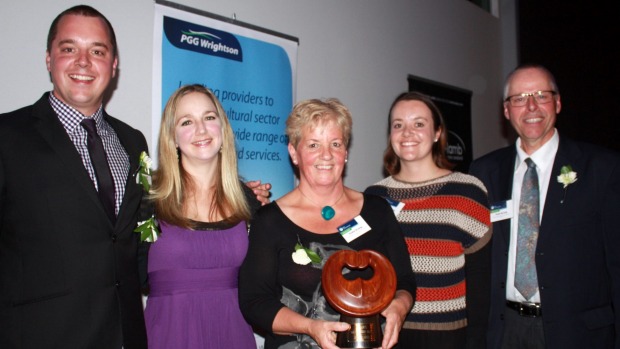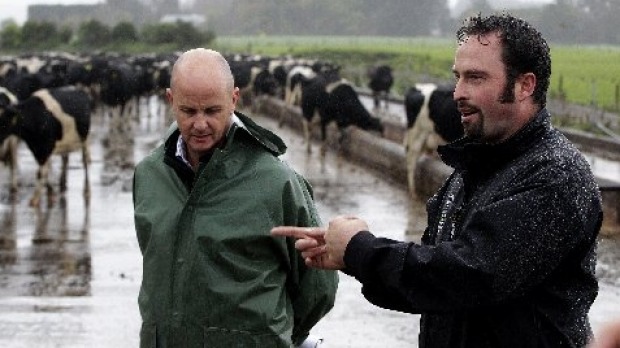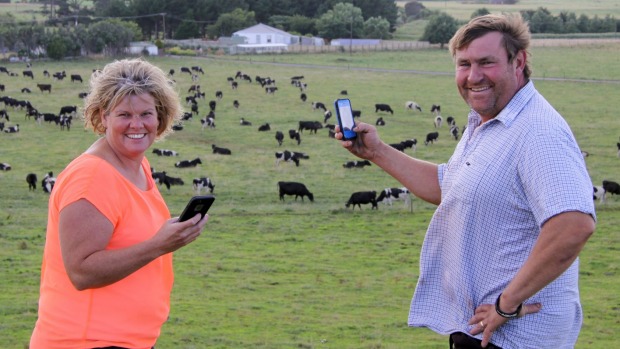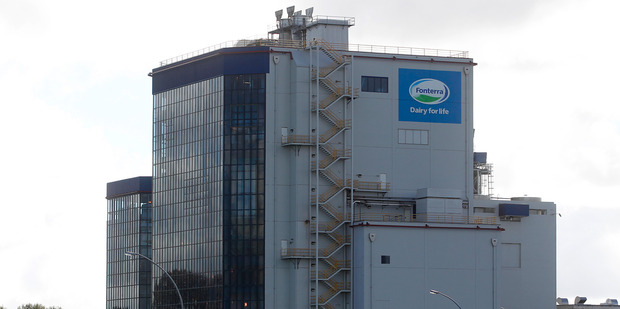Sharemarket winners and losers emerge from lockdown conditions
Two weeks into lockdown and thoughts are turning to recovery and what sort of economy New Zealand is going to have.
Already it’s clear that companies involved in the primary industry, in health or producing necessities are poised to benefit after the country emerges from its coronavirus lockdown.
On the other side of the divide, profit forecasts for even quite strong businesses have flown out the door.

The NZX is open during the lockdown but experts advise anyone looking at what seems like ultra-cheap shares to look at the company’s bigger picture.
READ MORE:
* Coronavirus: Lightning fast response may have saved us from a global depression
* Non-food manufacturers call to resume production during lockdown
* Coronavirus: Dairy exports in good shape as Canterbury economy battles virus fallout
* F&P Healthcare upgrades profit forecasts as its devices fight the virus
* Unemployment won’t fall back to 5pc for four years: BNZ
“I’d tell them don’t just look at the profit and loss statement, also look at the balance sheet and ask yourself, is the company capitalised to make it through to the other side,” Matthew Goodson, managing director of Salt Funds Management, says.
THE (LIKELY) WINNERS
Primary industries-related
The two major supermarket owners Foodstuffs and Countdown are expected to do well out of the lockdown but neither is listed in New Zealand.
However, other companies exposed to the primary sector are enjoying fresh interest.
In that sector, listed companies – that is, companies that ordinary investors can get a slice of – include Fonterra, A2, Synlait, Scales, Seeka, T&G Global and fishing company Sanford.
Most primary sector businesses and ports are classed as essential businesses and still running in some way.
But it’s not as simple as picking a sector. For example, logging has been stopped in its tracks by the virus. “There are definitely winners and losers at this stage,” Goodson says.
Some companies are already in good positions. Dairy darling A2 Milk recently boosted its now-cornerstone shareholding in Synlait and its shares have risen 17 per cent in the last year.
Honey exporter Comvita and probiotic company Blis Technologies are both benefiting from demand for their immunity-supporting products.
However, age-old factors such as supply, demand and exchange rates still play their part. New Zealand supplies a big chunk of China’s milk powder, yet the world is currently awash with milk.
Doug Steel, a senior economist at BNZ says a fall in our dollar offers some protection.
“It helps insulate exporters from the worst of any world price weakness. In fact, at least through March, the drop in the New Zealand dollar has more than offset offshore [dairy] price weakness overall.”

Selected technology
As a maker of respiratory devices, Fisher & Paykel Healthcare shares are up 87 per cent over the last year.
And it is an essential business, as is Pacific Edge, a company that provides tests for bladder cancer.
The massive explosion in both demand and supply of ventilators may go either way for Fisher & Paykel, and the current disruption could affect its sleep apnoea business. “But on balance, FPH is a rare winner,” Goodson says.
PushPay, which provides payment services in the United States church donation market, has “conflicting drivers. Clearly church attendance is collapsing, however, some churches are really getting themselves sorted online”, he says

Entertainment and communication
With streaming services in high demand, shares in Spark, which recently sold its streaming service Lightbox to Sky TV, are up 22 per cent over the last year and fibre installer Chorus is up 10 per cent.
Conversely shares in sports-driven Sky TV are down 78 per cent.
Goodson says Spark and Chorus are companies investors often turn to in bad times for stability and consistent dividends.
“It’d be a stretch to call them winners but their defensiveness has seen a strong outperformance versus a lot of other names,” he says, whereas Sky is in an “incredibly difficult position” and sport in “a world of pain”.
As Kiwis get bored in lockdown, a few industries are emerging as “clear winners,” Jane Davis, director of workplace wellbeing firm The Flourishing Institute, says.
“These are likely to be entertainment providers, streaming organisations, app development companies, online training and online services.”

Energy shares
With most people forced to stay at home, you would think electricity companies would be doing pretty well.
But that would be forgetting that many industries are not operating.
“It depends on the position of each company,” Goodson says. Power to households costs much more to provide and customers are more fickle, but it earns a higher margin.
However, when things are tough overseas, electricity is one sector that largely revolves around domestic drivers like low lake levels and industrial demand.
Meridian, for instance, is a major supplier to the Tiwai aluminium smelter, which is reducing its energy use for the next six months.
Contact Energy also supplies Tiwai to a lesser degree but would be affected it there was a surplus of power in the south, which can’t be exported north until transmission lines are built in three to five years.
“Once those transmission lines are built, prices would fall all round the country. Meridian would get a higher price than what they’re currently selling it on contract for, so it’s a mixed bag for them,” Goodson says.

THE (LIKELY) LOSERS
Retailers, tourism and hospitality
As the economy steps out of lockdown, the hardest hit will likely be tourism and international education, as border restrictions may be some of the last restrictions lifted.
“The more successful New Zealand is at destroying the virus domestically, the more vulnerable, relative to the rest of the world, we become, as we will have little to no community immunity,” BNZ head of research, Stephen Toplis, says.
Goodson says it will take tourism and international education “many, many years to come back” and their absence will hurt hospitality as well.

Hospitality companies on the NZX include fast food companies Burger Fuel and Restaurant Brands. The latter has a major international backer and has been running in Australia and Hawaii without dine-in options.
“They’ll see it through but they’ll take a tremendous earnings hit, as will every retailer,” Goodson says.
On the retail front, some companies like Briscoe Group, Smith’s City and The Warehouse Group have been able to carry on in a limited way by selling essentials during the lockdown.
Others are like outdoor clothing firm Kathmandu, a company with a string of overseas stores and known brands but whose shares have toppled from around $2.50 in February to around 64 cents currently.
Goodson said it was hard to value retail properly.
“The question is, what is the shape of retail when it comes back and who has the balance sheet to get through to the other side of the abyss.”
Investors have punished tourism-related stocks like Tourism Holdings, which dropped like a stone from $2.64, touched 55 cents and recovered to around $1.15.
Millennium & Copthorne Hotels quickly switched from forecasting interim revenue of $24 million to an annual loss.
And aviation is truly up in the air. Air New Zealand and Auckland International Airport shares have pummelled as passenger numbers evaporated.
But as crucial links to the world, Air New Zealand has been given a government loan, and Auckland Airport has announced a $1.2 billion recapitalisation.

Housing
Housing does not have a big direct presence on the NZX, but it’s there, with Fletcher Building and several retirement village providers exposed to the housing market.
Blue-chip Ryman shares, which were close to $16 at the start of March, dived to $6.64 before rebounding to about $11.
Key to this, according to Goodson, will be the unemployment rate. House prices are tipped to fall between 3 and 10 per cent, as immigration falls away and banks become credit-constrained.
He says if housing was to revert back to 2014 levels, prices would sink 30 per cent. “So I think a critical question for the economy … is how bad does the housing market get.”
And there are other external factors which individual companies can do little about.
A net 43 per cent of businesses in ANZ’s business outlook this week think their exports will decline. A net 8 per cent of businesses think they will be lowering prices. “If that ain’t sign of deflation, nothing is,” Toplis says.
However, an economy without mass deaths will have definite advantages. Toplis is forecasting waves of the virus will potentially seeing businesses operating differently in different regions.
Wiping out the virus would be a “remarkable outcome … if every player in the economy – households, business and the government – plays their part, and we have a lot of luck.”











